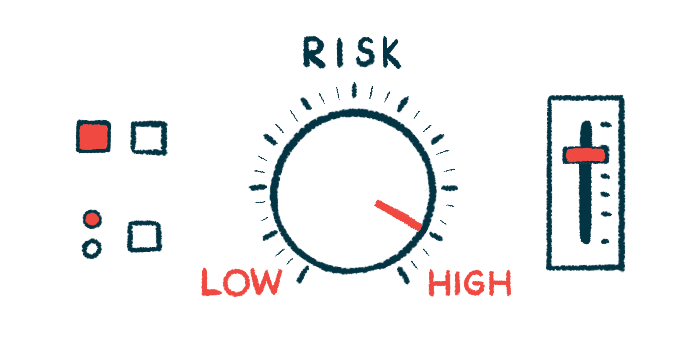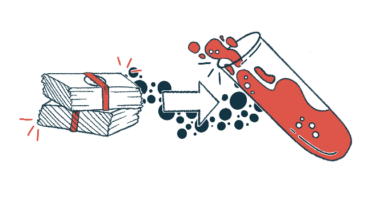Study IDs risk factors for severe lupus flares in patients in Iran
Younger age, kidney issues found to be significant predictors

Younger age, greater disease activity, and a history of kidney involvement are significant predictors of severe disease flares among people with systemic lupus erythematosus (SLE), a study in Iran has found.
The findings suggest that patients with these risk factors “may need closer monitoring and follow-up” to better manage future flares, the researchers wrote.
In comparison with lupus patients in other countries, the study also showed that individuals with SLE in Iran experienced more or a similar number of flares than did those in many European nations — save Germany, where the rates of such episodes were higher. However, Iranian patients had fewer of these periods of disease exacerbations than did people with lupus in the U.S.
The study, “Predictors of severe lupus flare: a prospective follow-up study,” was published in BMC Rheumatology.
1st study of lupus flares among SLE patients in Iran
In SLE, an autoimmune disease commonly known as lupus, patients often experience periods of disease exacerbations, known as flares, when symptoms suddenly appear or worsen. These flares typically are interspersed with periods of remission, where symptoms are eased or absent.
Symptoms during a flare will depend on which organs are impacted, but may include fatigue, fever, pain, and kidney problems.
While exacerbations may be followed by periods of remission, their effects can still be long lasting. Over time, flares contribute to a greater burden on patients’ lives, including more hospitalizations, accumulation of organ damage, worse life quality, and economic pressure.
“Given numerous ominous effects of flare on patient’s outcome, the ability to timely recognize the flares as well as to identify the possible predictors are very imperative for rapid diagnosis and necessary changes in management plans,” the researchers wrote.
The aim of these Iranian researchers was to better predict severe lupus flares among people with SLE in their country. To that end, the team examined data from 120 SLE patients — 104 women and 16 men — followed at an Iranian center from June 2019 to April 2021.
“In our knowledge, no study has been conducted in our country to address this issue yet,” the team wrote.
The mean age of the patients was 35.5, and they had been living with SLE for an average of 10.5 years. More than one-third (39%) experienced at least one severe lupus flare during follow-up, while 61% experienced mild/moderate flares or no flares.
Compared with patients experiencing no or mild/moderate flares, the severe flare group had a significantly higher proportion of men (21% vs. 8%), patients with a history of lupus nephritis (76.5% vs. 44%), and patients with active lupus nephritis at their first visit (47% vs. 9.5%).
Lupus nephritis is a serious complication of lupus characterized by kidney damage and inflammation.
Those who developed severe flares also were significantly more likely to be positive for antibodies against double-stranded DNA (ds-DNA) — a known marker of lupus disease activity — at their first visit (74.5% vs. 53.5%).
Also, patients with lupus nephritis or neuropsychiatric symptoms “were more likely to end up showing severe lupus flare,” the team wrote.
Increased risk traced back to first patient visit
A number of the differences between the two groups became even more pronounced when considering how many severe flares a patient had.
For example, a history of lupus nephritis was reported in 44% of patients without severe flares, 74.5% of those with one severe flare, and 83.5% of those with more than one severe flare. A nearly identical distribution was observed for the proportion of patients positive for anti-dsDNA antibodies, specifically 52% vs. 74.5% vs. 83.5%.
Follow-up data showed that patients who experienced at least one severe flare were about seven years younger, on average, than those who did not.
At the first visit, patients in the severe flare group had about three times more protein in their urine than those in the group without severe flares. Additionally, those with severe flares had scores more than twice as high as their counterparts on the Systemic Lupus Erythematosis Disease Activity Index (SLEDAI), reflecting greater disease activity.
These factors also were significantly different between patients without a severe flare, those with one severe relapse, and those with more than one episode of severe flare.
Final statistical analyses indicated that younger age, a higher SLEDAI score, and a history of lupus nephritis at the first clinic visit were significant independent predictors of experiencing severe disease flares later on.
In particular, every one-year increase in age reduced the odds of a severe flare by about 13%, while each one-point increase in SLEDAI scores raised the odds of a severe flare by 19%.
A history of nephritis was the strongest risk factor for a future severe flare, raising the odds by more than 4.5 times.
The scientists also performed an analysis to identify factors seen at the first study visit that could predict SLEDAI scores, or worse disease activity, at later visits. Higher blood levels of ds-DNA antibodies, excess protein in urine, and the presence of arthritis all were found to be predictors of higher SLEDAI scores at future visits.
Rates of lupus flares in Iran lower than in US
As part of their work, the team compared severe flare rates of SLE patients in Iran with those of individuals with lupus in other countries, as found in a number of studies.
Overall, 39% of the Iranian patients experienced severe flares during follow-up, according to the researchers. That rate was markedly higher than that seen for patients in Portugal, where 17% of patients were found to have severe flares. It was comparable to the rate in Norway, which was 38%, though lower than that seen in Germany, which was 66%. One study from Italy cited a rate of 7%, while another from that country showed 47% of patients experiencing severe flares.
The highest rate of severe flares was found for patients in the U.S. — ranging from 53% to 71%, according to the study.
Unfortunately, the prevalence of inactivity in adult population in our country can be as high as 70%, which might explain partly the higher disease activity and flare rate in our patients.
The researchers noted that certain factors, such as economic status, environmental factors, healthy lifestyle, and physical activity, also can substantially influence outcomes for lupus patients.
“Unfortunately, the prevalence of inactivity in adult population in our country can be as high as 70%, which might explain partly the higher disease activity and flare rate in our patients,” the team wrote.
Nevertheless, the findings overall highlight factors that may contribute to lupus flares among SLE patients.
“Larger and longer and multicenter follow-up studies could achieve a better understanding of the predictors of severe lupus flare,” the scientists concluded.









